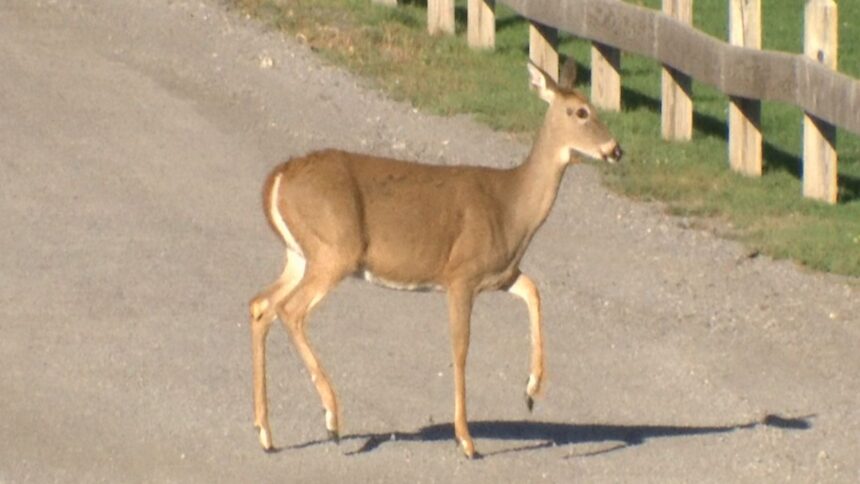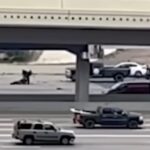The New York State Department of Transportation estimates there are 65,000 deer-vehicle collisions every year. The cost of that is estimated at $40,000.
There’s an effort underway in the western part of the state to create a wildlife pathway. It would start in Western New York and span across the state, to connect with the Staying Connected Initiative already in place, and end in Canada.
The New York Wildlife Crossing Act passed both the New York State Senate and Assembly and is awaiting delivery to the governor. If the bill is signed, it would direct state transportation agencies to identify wildlife crossing opportunities. But the clock is ticking to get it passed, with federal grants on the line.
At the Western New York Land Conservancy’s office, Director Marcus Rosten is testing his trail cameras.
“They are on roadways,” said Rosten.
He has 45 cameras, which will start collecting data this summer for a wildlife study.
“To try and collect that data to help tell New York State, ‘hey, these are important areas to protect for wildlife connectivity,’” Rosten said.
It should be completed by the end of the year. In the meantime, Rosten, who’s directing the WNY Wildway Project, says conversations are already underway with the state DOT to remedy some concerns — particularly culverts, which are up for maintenance every decade.
“We have been working with our partners at the state to say, ‘all right, we have this wild way map as you can look at culverts that are coming up for maintenance or to be redone and if they fall within a priority area in the wild way, how can we take a second look at those culverts to figure out, can we enlarge them?’ ” Rosten said. “Can we add terrestrial elements that will allow Bobcat or Fisher to make it through those underpasses?”
The data will also be used to prove the region is worthy of federal money.
“Right now, there [is] $300 million available right now through the Wildlife Crossings Act,” Rosten said.
Rosten and his team have already identified 1 million acres across Western New York that will be part of the wildway. It will be part of the Eastern Wildway, which runs from Canada to the Gulf of Mexico.
It’s part of the bigger picture as we deal with climate change.
“Animals are going to have to move and find and stay in their ideal temperature range,” Rosten said.
But what of the literal roadblocks they face? Enter Scott LaPoint, the director of research at Black Rock Forest, a 4,000-acre living laboratory in Cornwall.
“Here we did some road kill surveys on only 15 miles of the Thruway,” LaPoint said. “And based on our estimates, we think there are about 19 animals and mammals killed per mile per year here. So, you’re looking at 300 animals, mammals killed on this 15-mile section every year.”
LaPoint says once a crossing is placed, animals take it from there — such as a bobcat he got on camera, for example.
“We have good footage of one of our bobcats with her collar on and she brings her kittens like she’s gone through this tunnel on a regular basis,” said LaPoint. “And all of a sudden, one day she spends about three hours literally coaxing and calling and turning around and going back and forth three hours, and eventually her two kittens.”
He says more crossings are necessary as the human population and subsequently, our infrastructure grows.
Rosten says it comes down to safety, whether you’re on two legs or four.
“[It’s] giving those animals a safe place to travel, and then giving New Yorkers a safe place to drive,” Rosten said.
Spectrum News 1 has reached out to the DOT and Thruway Authority. The DOT couldn’t comment, but said it’s had wildlife crossing efforts underway for years. A Thruway spokesperson said it isn’t really a player in this, but said LaPoint would have more information.
A New York State Office of Parks spokesperson says they are aware of the legislation and are following it, and once it’s passed, they will work with sister agencies as necessary.











